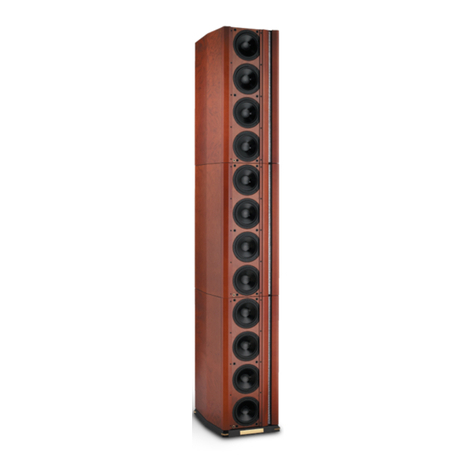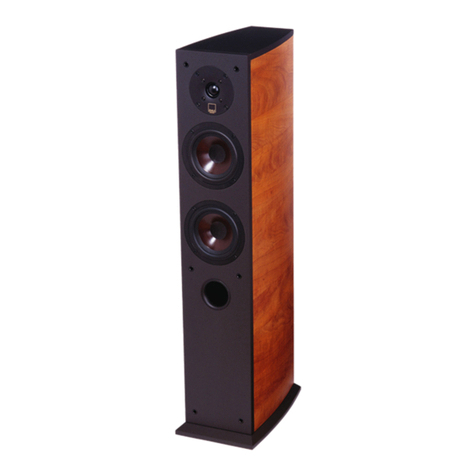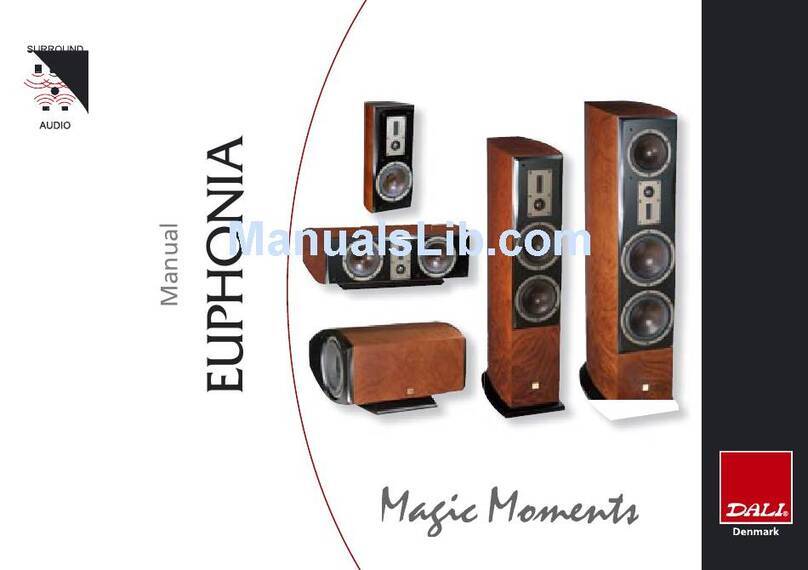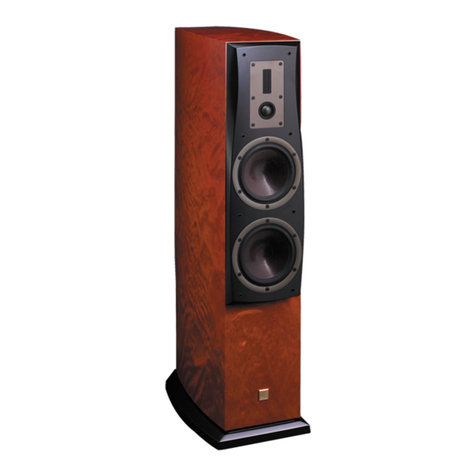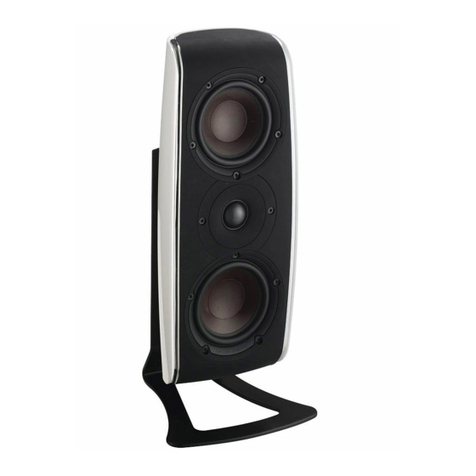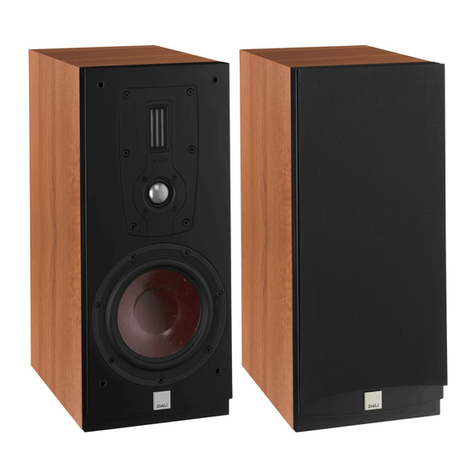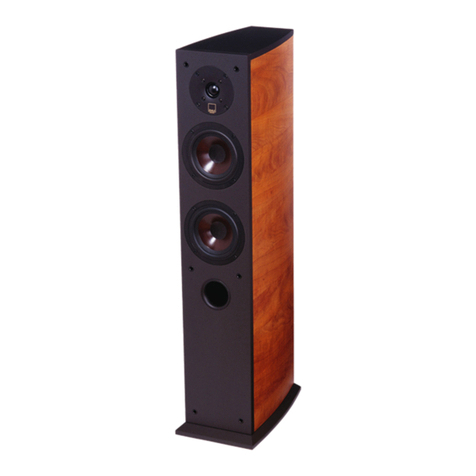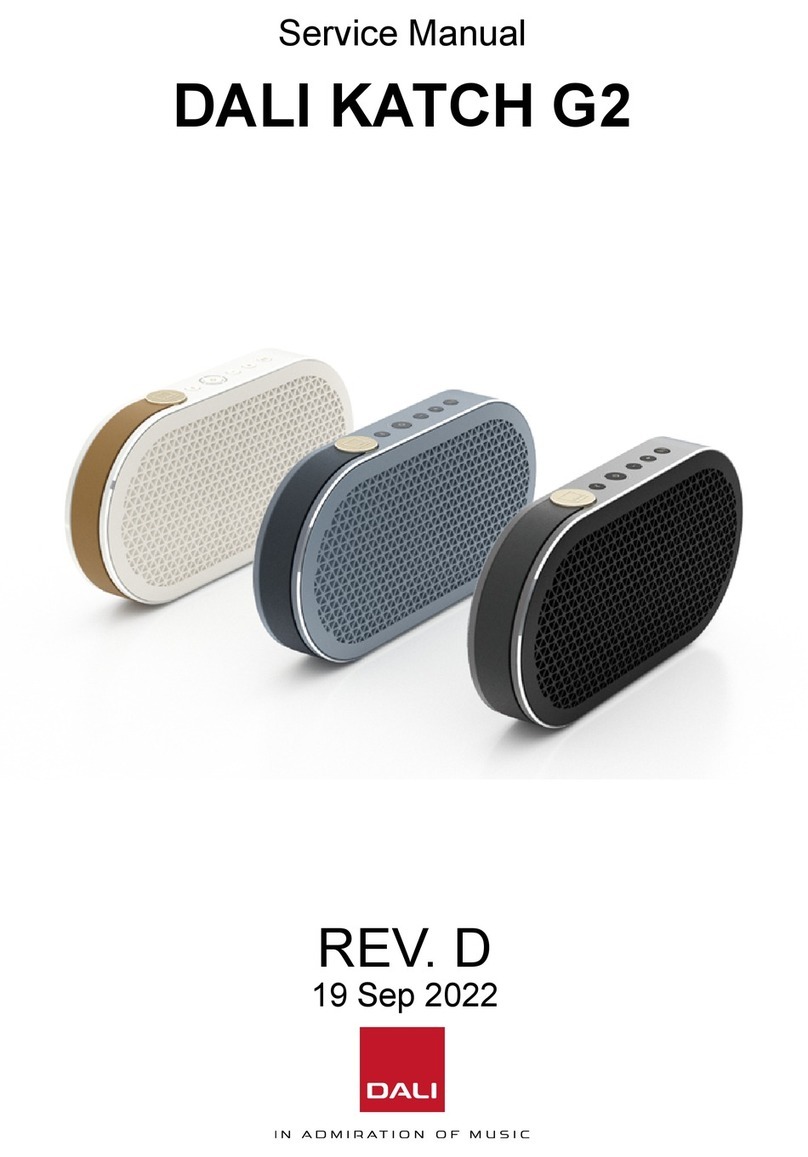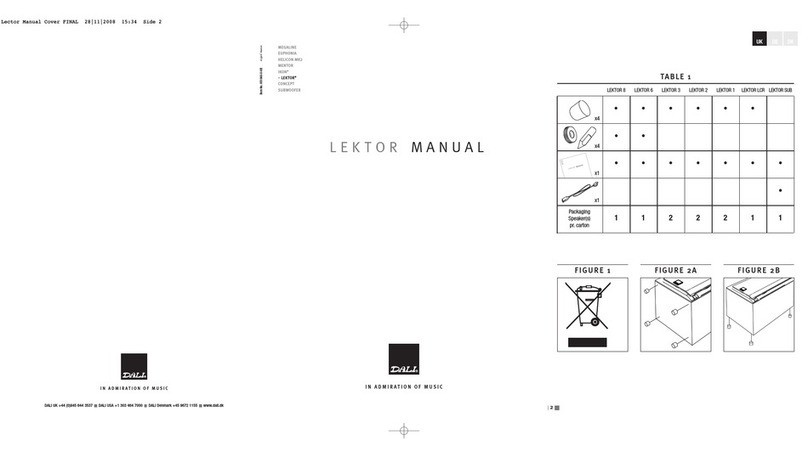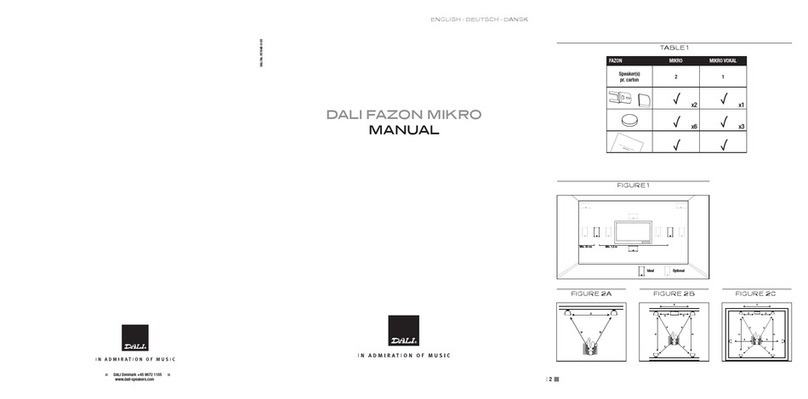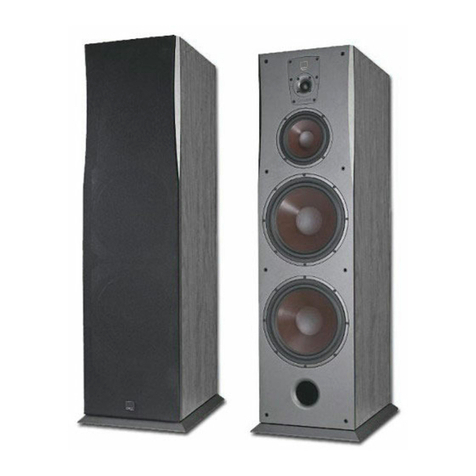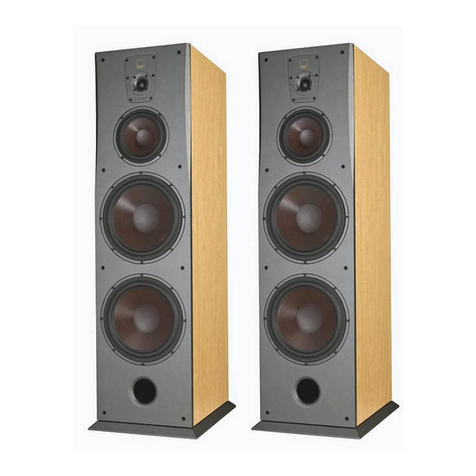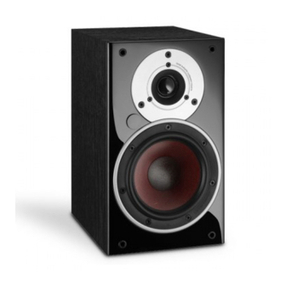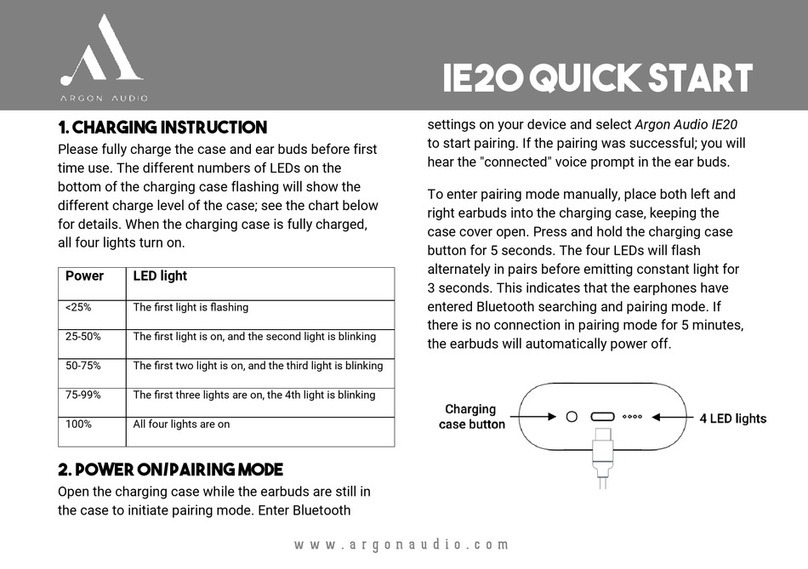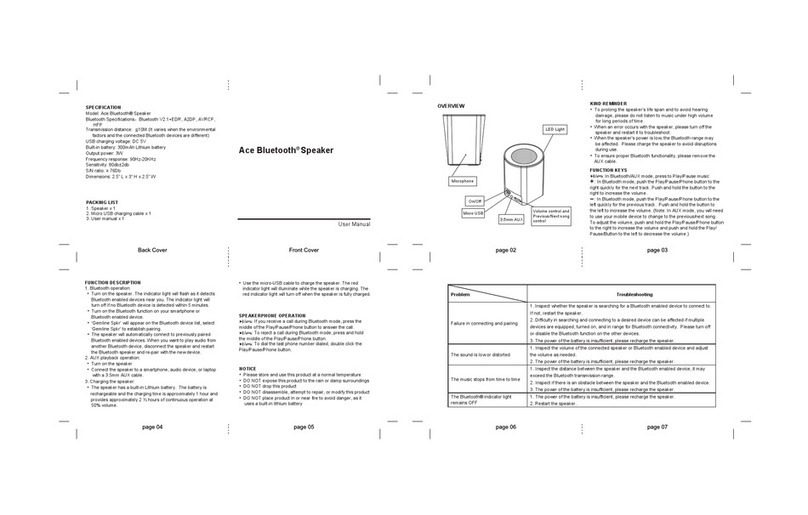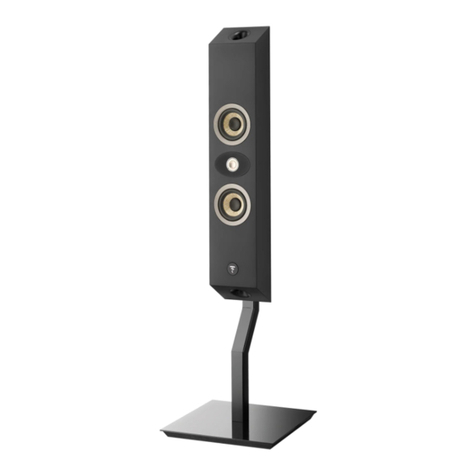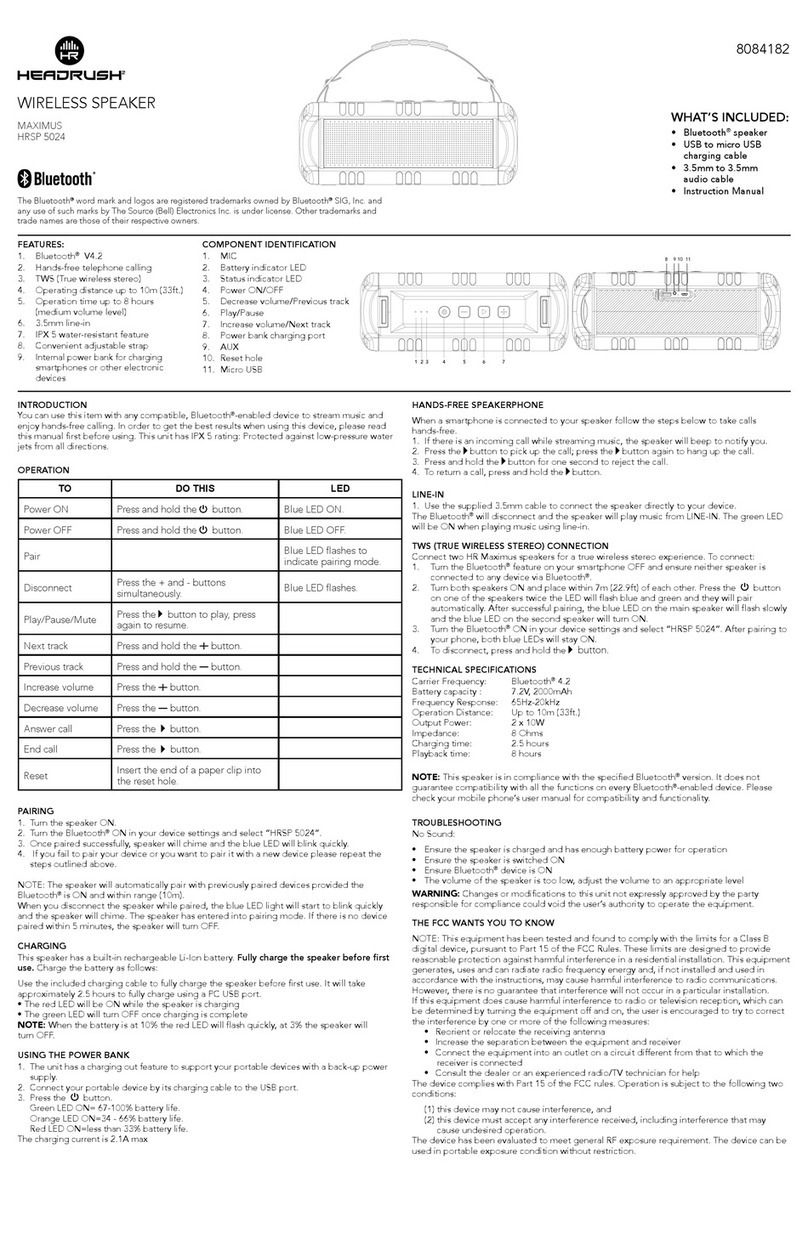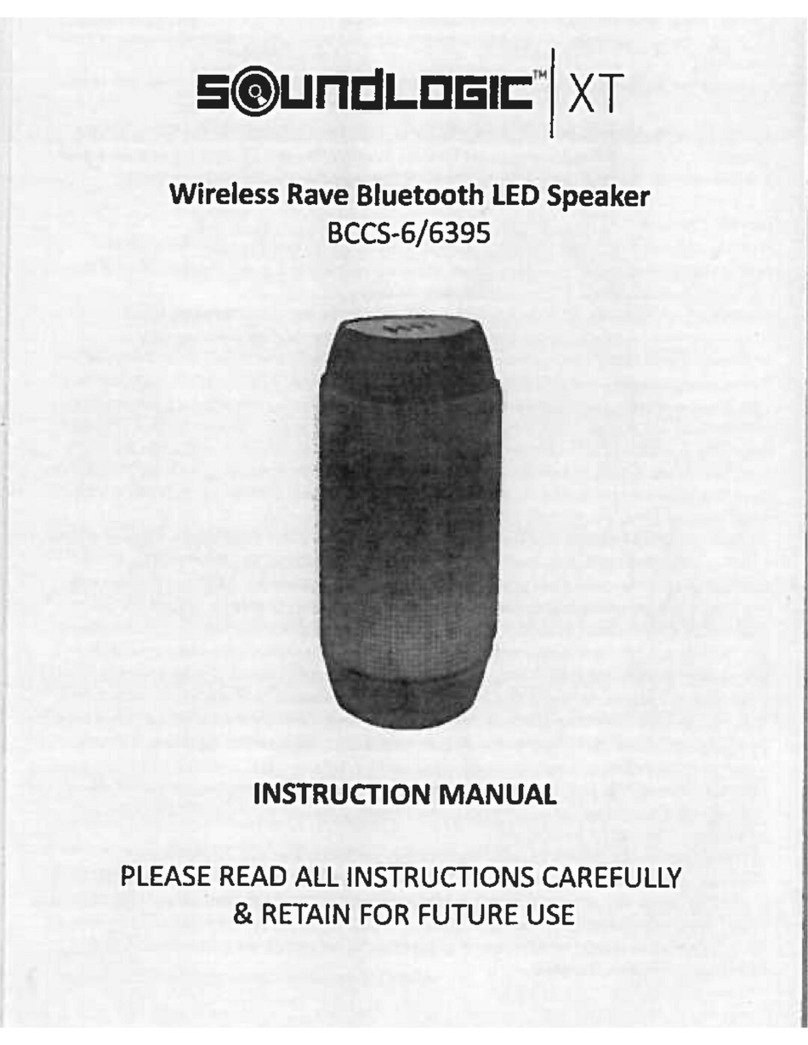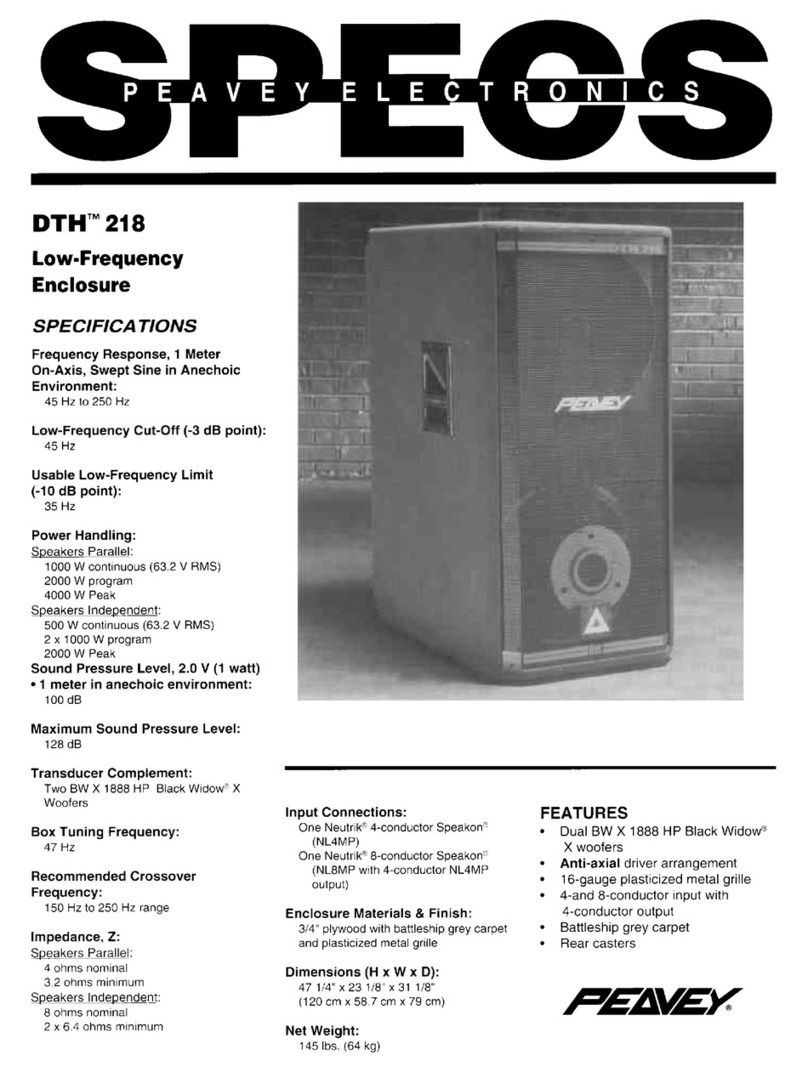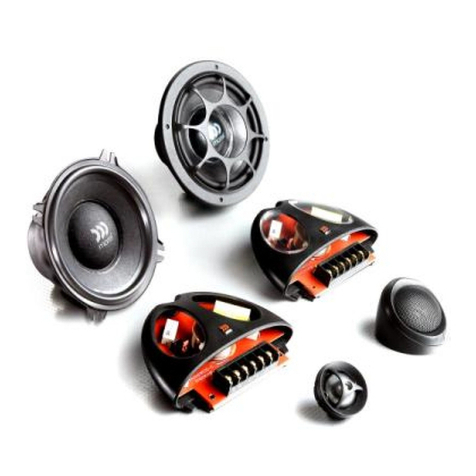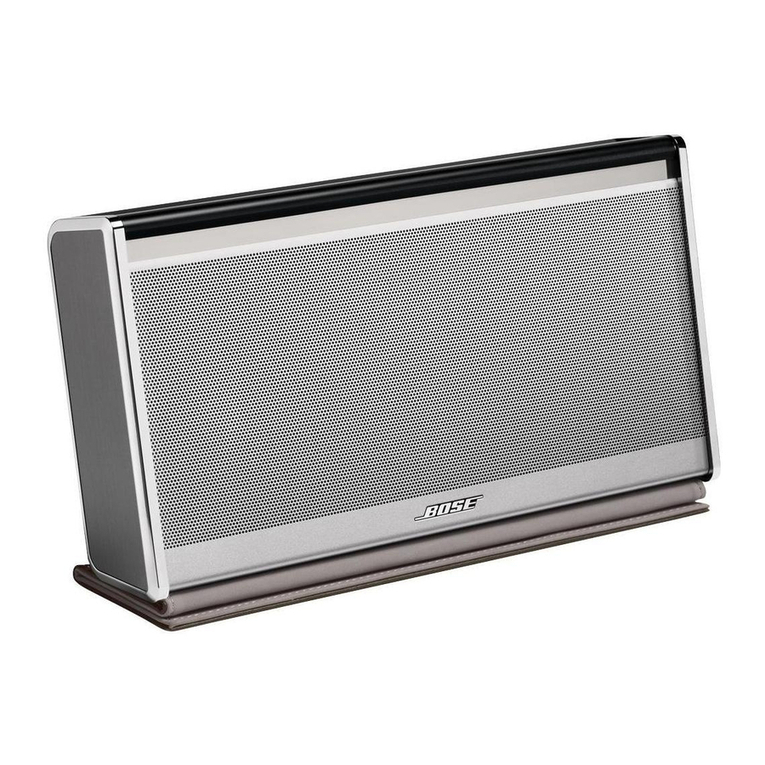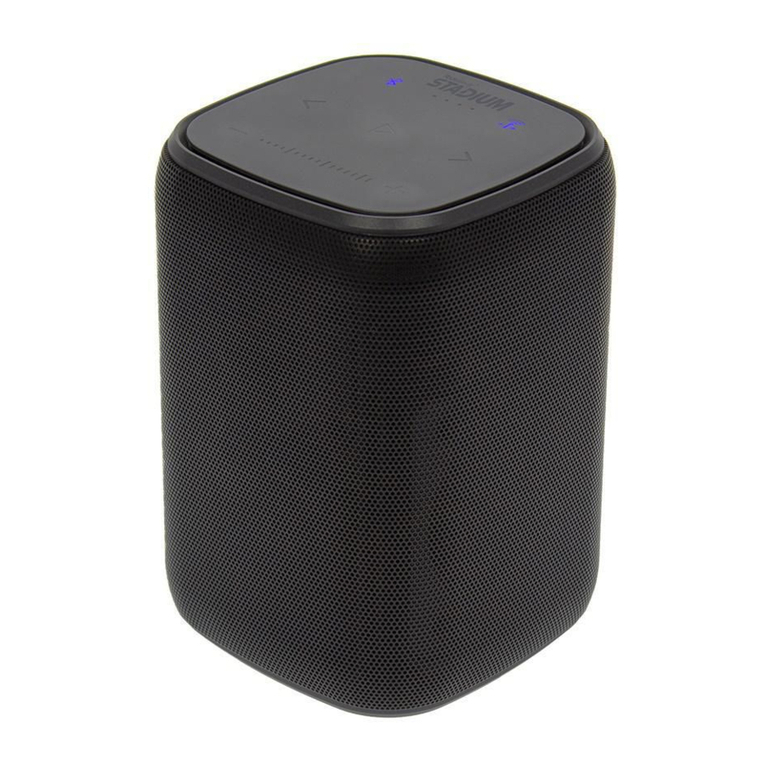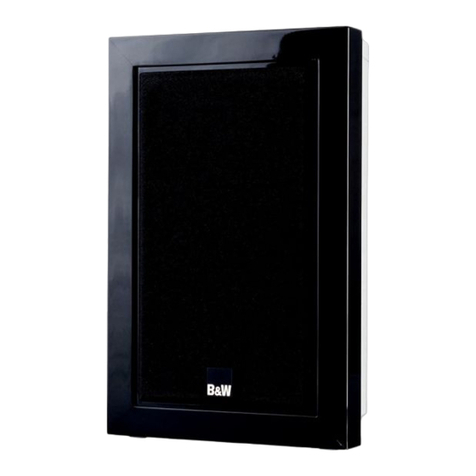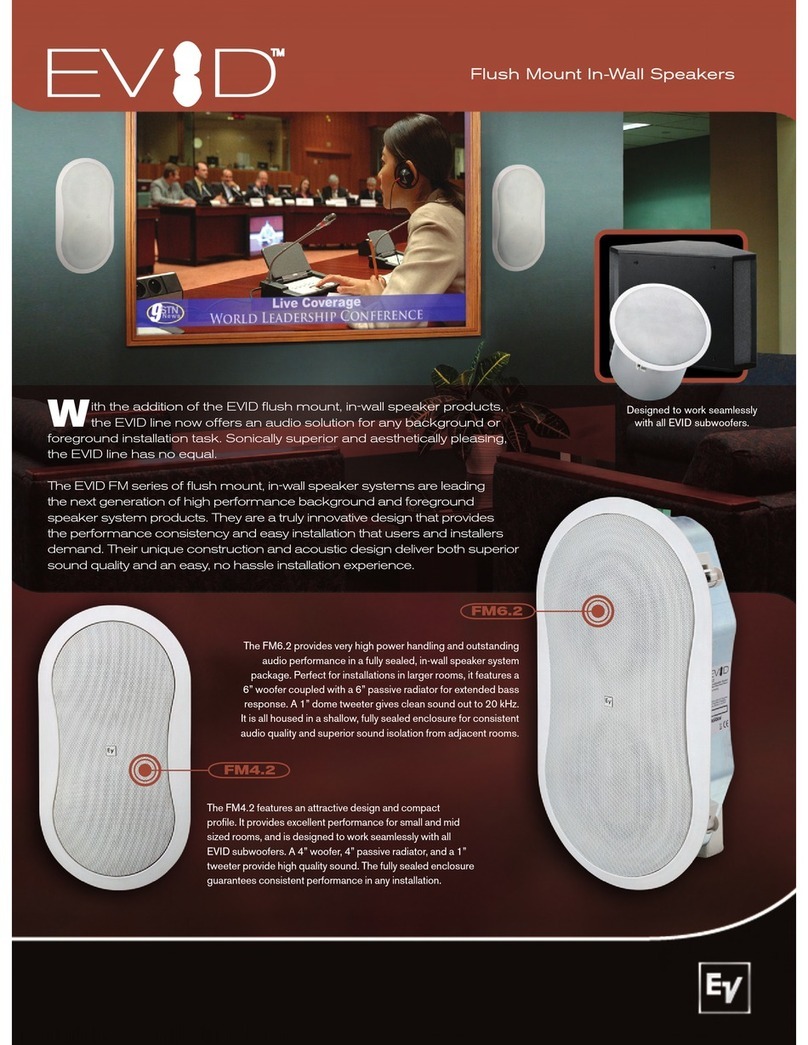
8
All listening rooms have their particular uni ue
acoustic properties which has a big influence on
how we experience the sound from the
loudspeakers. Basically, it has to do with the way
the room embraces the sound and then gets rid
of it again, and you can do something about that
yourself.
When loudspeakers are playing in a room, you
will not only hear the sound directly, but also a
number of reflections from the floor, walls and
the ceiling. These unwanted reflections can be
dampened by things in the room such as e.g.
book cases, plants, carpets, furniture etc.
If the sound is on the bright side, soft things such
as curtains, wall-to-wall carpets or spread carpets
can help. If the living room has big window
surfaces, closing the curtains can help.
The uality and amount of deep bass depends
on the size and shape of the room. The bass is
accentuated by placing the loudspeakers near a
side or a rear wall. A corner position normally
accentuates the bass even more, but it also
increases the reflections from the walls. You
should therefore experiment with different kinds
of placements in order to find the sound balance
you like best.
As a ground rule, you should avoid big, smooth
reflecting surfaces close to the loudspeakers, as
the reflections here will occur as phantom
loudspeakers and will in particular destroy the
spacious reproduction aspects. A plant, a wall
carpet, or just a carpet on the floor in front of the
loudspeakers can have a surprisingly big effect
on the experienced precision of the soundstage.
Once you have found the best position you
should make sure that the loudspeakers are stan-
ding firmly and do not rock. As for the floor stan-
ding models it is recommended that the spikes
delivered with the loudspeakers are mounted in
the bottom of the cabinet. On the stand/bookcase
models, attach the rubber feet included.
THE LISTENING ROOM
